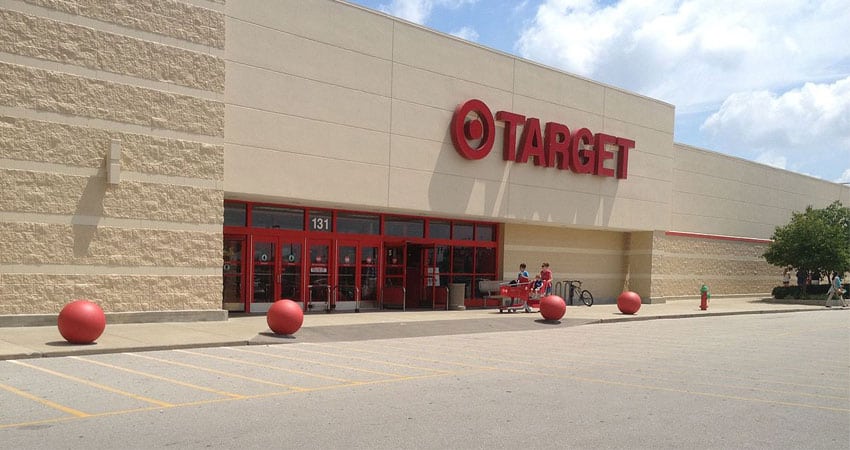Target’s continued investment and focus on ecommerce is paying off as the company reported a robust 22% increase in online sales for the first quarter, ahead of the industry average, even as revenue decreased 1.1% to $16 billion and store foot traffic and comp sales were also down.
But CEO Brian Cornell stressed that Target, unlike several other retail chains, was not in store shutdown mode but instead saw the location closings of rivals as a ripe opportunity to gain market share.
Cornell told investors on an earnings call that Target is in the midst of investing $7 billion over the next three years in technology and supply chain initiatives to meet shifting consumer demands. It is also busy redesigning full-line stores to make them more attractive and opening more small-format stores, the latter an area in which rival Walmart has a significant head start.
“In the first quarter we completed 21 existing store remodels and opened four new small format locations,” Cornell said. “For the year, we’re on track to deliver our goal to complete 100 remodels and add 30 small format stores.” The chain already had 30 such stores in urban markets at the end of last year, with curated collections designed with the local market in mind.
On the fulfillment side, Target will soon begin a test of same-day delivery at a store in New York’s Tribeca neighborhood. At checkout, customers have the option of having the order delivered to their home later that day during a specified time window.
“This test presents an opportunity to gauge guest demand for this service in a high-traffic location filled with urban guests who will appreciate the convenience,” said Target COO John Mulligan. “Through this test we will gain insights about potential operational challenges and determine appropriate pricing and delivery windows based on guest preferences. This will help us to understand the potential to rollout a similar service more broadly over time.”
Mulligan said Target will open a new distribution facility in the Northeast during the second quarter that will allow it to further test alternative supply chain and fulfillment approaches such as the Target Restock program being piloted in its headquarters city of Minneapolis. In that test, household essentials ordered online are delivered the next day from a nearby store.
“(The new facility) will allow us to test differentiated distribution capabilities, including store replenishment based on the appropriate unit of measure on every item, including pallets, key specs and niches,” Mulligan said. “By testing out of a separate facility, we can implement without disrupting day-to-day operations in any of our current facilities.”
This process will help Target learn about “both opportunities and complexities associated with this new distribution model,” Mulligan added.
“I want to stress that we’re opening this facility so we can test and learn quickly, not to create new capacity,” he said. “In fact, given our opportunity to continue increasing the speed and flexibility of our entire supply chain and leverage our stores to enable digital fulfillment, we have ample capacity within our current network to grow for many years. As we gain insights from the test in this separate facility, we will be better informed and prepared to rollout this new model into existing facilities overtime.”
On the bottom line, Target posted $681 million in net profit for the quarter, up 7.7% from $632 million in 2016. Earnings per share were $1.22, well ahead of the S&P Global Intelligence consensus of 91 cents.

